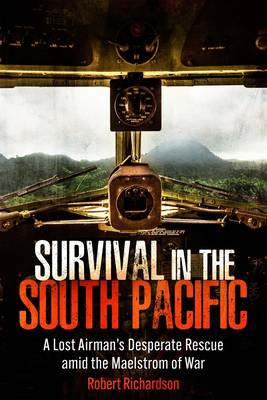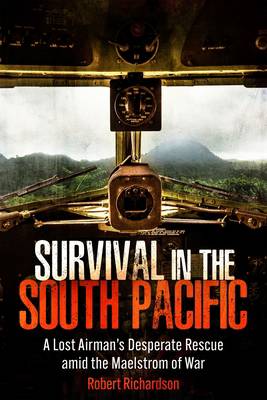
- Afhalen na 1 uur in een winkel met voorraad
- Gratis thuislevering in België vanaf € 30
- Ruim aanbod met 7 miljoen producten
- Afhalen na 1 uur in een winkel met voorraad
- Gratis thuislevering in België vanaf € 30
- Ruim aanbod met 7 miljoen producten
Zoeken
Survival in the South Pacific
A Lost Airman's Desperate Rescue Amid the Maelstrom of War
Robert Richardson
Hardcover | Engels
€ 46,45
+ 92 punten
Omschrijving
"This account of oft-forgotten aspects of the war that is also a powerful survival story is highly recommended for the casual reader of military history as well as the serious scholar of the Pacific war." - Journal of America's Military Past
In September 1943, as America began advancing from its foothold on Guadalcanal, a young American airman was lost in heavy weather over the South Pacific on what was expected to be a routine flight. In examining that loss and the events leading up to a rescue attempt on an island in the South Pacific, and bringing together societies utterly alien to each other, Survival in the South Pacific brings together the big themes of the Pacific War.
Lieutenant Leonard Richardson and his comrades had been swept from their homes across America, trained at speed for war, and dispatched to one of the remotest places on the globe. American war plans in place when Pearl Harbor was attacked poorly reflected the capabilities of its military, and the limits imposed by America's far-flung and indefensible territories. The "Germany First" policy had resulted in a deeply uncertain future for forces in the South Pacific and Australia--the United States was unprepared for the global war that came to it in late 1941, even as the pipeline of men and materiel began to fill. Young Allied and Japanese aviators, sailors, and soldiers, were not the only ones thrown into the swirling maelstrom of war that had engulfed the Pacific--the indigenous islanders were also immersed in a new reality. In bringing together individual stories of men at war, this book gives a new perspective on the Pacific War.
In September 1943, as America began advancing from its foothold on Guadalcanal, a young American airman was lost in heavy weather over the South Pacific on what was expected to be a routine flight. In examining that loss and the events leading up to a rescue attempt on an island in the South Pacific, and bringing together societies utterly alien to each other, Survival in the South Pacific brings together the big themes of the Pacific War.
Lieutenant Leonard Richardson and his comrades had been swept from their homes across America, trained at speed for war, and dispatched to one of the remotest places on the globe. American war plans in place when Pearl Harbor was attacked poorly reflected the capabilities of its military, and the limits imposed by America's far-flung and indefensible territories. The "Germany First" policy had resulted in a deeply uncertain future for forces in the South Pacific and Australia--the United States was unprepared for the global war that came to it in late 1941, even as the pipeline of men and materiel began to fill. Young Allied and Japanese aviators, sailors, and soldiers, were not the only ones thrown into the swirling maelstrom of war that had engulfed the Pacific--the indigenous islanders were also immersed in a new reality. In bringing together individual stories of men at war, this book gives a new perspective on the Pacific War.
Specificaties
Betrokkenen
- Auteur(s):
- Uitgeverij:
Inhoud
- Aantal bladzijden:
- 304
- Taal:
- Engels
Eigenschappen
- Productcode (EAN):
- 9781636244150
- Verschijningsdatum:
- 30/09/2024
- Uitvoering:
- Hardcover
- Formaat:
- Genaaid
- Afmetingen:
- 154 mm x 230 mm
- Gewicht:
- 598 g

Alleen bij Standaard Boekhandel
+ 92 punten op je klantenkaart van Standaard Boekhandel
Beoordelingen
We publiceren alleen reviews die voldoen aan de voorwaarden voor reviews. Bekijk onze voorwaarden voor reviews.








